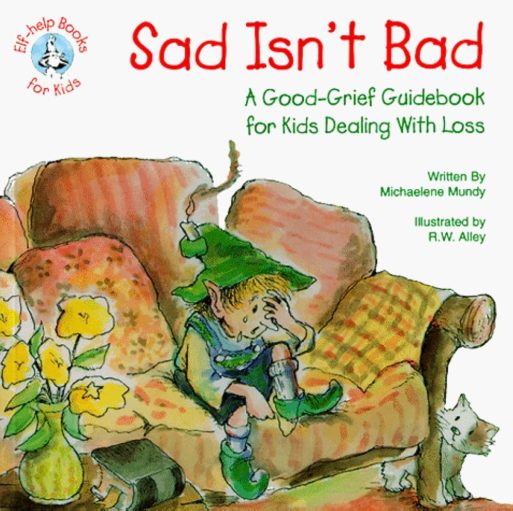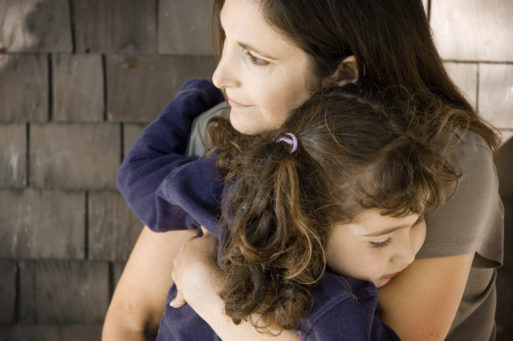 Helping a child understand death is a challenging task, especially when you are grieving yourself. Children experience many of the same emotions as adults when they lose a loved one, although they process their grief in very different ways. Young children often see the death of someone close to them as punishment for bad behavior, which can leave them feeling guilty and afraid. Some children fear that others they love will die, too, or that they are also going to die soon. They may be alarmed at the sadness they see around them and fear that life will never be the same again.
Helping a child understand death is a challenging task, especially when you are grieving yourself. Children experience many of the same emotions as adults when they lose a loved one, although they process their grief in very different ways. Young children often see the death of someone close to them as punishment for bad behavior, which can leave them feeling guilty and afraid. Some children fear that others they love will die, too, or that they are also going to die soon. They may be alarmed at the sadness they see around them and fear that life will never be the same again.
Michaelene Mundy’s “Sad Isn’t Bad” is an excellent tool for any parent or caregiver who is helping a child navigate the difficult and frightening experience of grief. Using simple, direct language and charming elf illustrations, Mundy reassures her audience that sadness, confusion, and even anger after a death are expected and OK. “There will be tears,” she says, “but tears can be good. Sad isn’t bad.”
The book urges children to talk about their feelings, and warns that keeping sadness and anger inside can cause physical problems, too. “Sometimes people get stomach aches or headaches when they’re really sad,” Mundy explains. “After all, you feel sad all over, in your mind and your body. Tell a grown-up if this happens to you.”
Mundy also shares the truth that being alone with grief can be a difficult experience. “You may have trouble going to sleep at night,” she says. “Read a favorite story or ask someone to snuggle in and read to you.”
A product of Abbey Press, an Indiana publishing house that specializes in religious and inspirational “Elf-help” books for children and adults, “Sad Isn’t Bad” may not appeal to families who do not incorporate the concepts of God, Heaven or an afterlife into their children’s lives. Although the theme of the book is not overtly religious, the chapter “Where Is Your Loved One Now?” might be off-putting to some. In it, Mundy talks about the idea of rejoining dead loved ones in Heaven, saying, “Most people believe that we will be together with our loved ones and God after we die. What do you think it will be like to be with your loved one again?”

Credit: drsunnyimwang.wordpress.com
On a more secular note, the chapter also refers to death as a form of spiritual rebirth. ”Just as a caterpillar turns into a beautiful butterfly, your loved one is free and happy and beautiful now too.” This, I believe, is a lovely and far less mystical way to frame death for a young child.
Religious overtones notwithstanding, “Sad Isn’t Bad” is a practical and attractive book filled with over 50 pages of solid, easy-to-understand advice for children who are dealing with grief. Mundy touches on many important topics, including the truth that the pain and sadness of grief stay with us for a long time. She discusses handling the anniversary of a death and navigating through special holidays when someone we loved has died. She even touches on the importance of rituals, such as visiting the loved one’s grave, and the healing power of creating and sharing memories of the person who died.
It would be wonderful if our society would begin teaching young people about death before they were confronted with it for the first time. Someday, perhaps, we will. In the meantime, Michaelene Mundy’s “Sad Isn’t Bad” is an excellent tool for helping kids deal with their grief and understand that life will be OK again someday.

 “Sad Isn’t Bad: A Good Grief Guidebook for Kids Dealing With Loss” by Michaelene Mundy
“Sad Isn’t Bad: A Good Grief Guidebook for Kids Dealing With Loss” by Michaelene Mundy


 “Help Me, Helen”
“Help Me, Helen”
 Recovering Cremation Remains After the Los Angeles Fires
Recovering Cremation Remains After the Los Angeles Fires
 “As Tears Go By” by Marianne Faithfull
“As Tears Go By” by Marianne Faithfull














